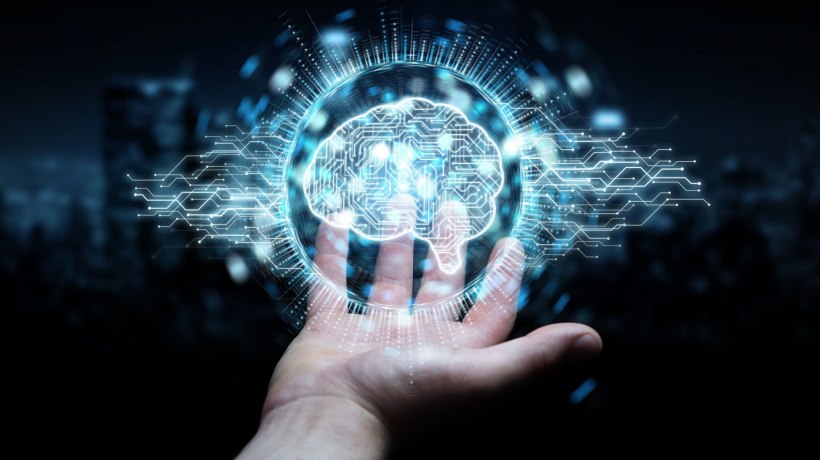Exploring The Basics Of Artificial Intelligence
The concept of Artificial Intelligence doesn't need much of an introduction. In recent years, it has taken the world by storm, with a considerable percentage of companies having incorporated at least one AI capability in their processes. However, the truth is that AI still remains a complicated topic that many people don't really comprehend. In this article, we try to give a simple answer to a complex question: what is Artificial Intelligence? Apart from defining it, we're going to look into AI subsets, as well as the 7 types of Artificial Intelligence.
What Is Artificial Intelligence?
Giving Artificial Intelligence a concrete definition is a rather difficult task. We could attribute that to the fact that AI is a combination of many other technologies that work together to enable devices to function with an intelligence that is as human-like as possible. Therefore, a definition that we could conclude is that Artificial Intelligence refers to the process of machines receiving, analyzing, and combining information in a way that allows them to perform tasks typically performed by humans, such as visual and auditory recognition, decision making, language processing, and many more.
AI Vs. Machine Learning Vs. Deep Learning
We often hear Artificial Intelligence being used interchangeably with other buzzwords, such as machine learning (ML) or deep learning. However, this is a faulty practice, as machine learning is the subset of the overarching category of AI. If we wanted to define machine learning, we would talk about techniques and algorithms that allow the AI system to "learn" through a set of data that act as examples. The more advanced machine learning becomes, the better results it produces and the less training it needs from humans. Specifically, there are three types of ML: supervised algorithms, unsupervised models, and reinforcement learning.
In turn, deep learning is a subset of machine learning, where neural networks are used to analyze stimuli further and deliver more accurate results. This technique approaches human intelligence a little more since it processes data in several layers where different details and criteria are analyzed. Deep learning is mostly used in natural speech and visual processing devices, such as voice assistants and face recognition systems, respectively.
What Are The 7 Types Of Artificial Intelligence?
To better understand AI, we need to explore its different types. Depending on the level of human intelligence emulation an AI system can achieve, we classify it into different types. Based on this criterion, we get two common AI classifications. The first is based on functionalities, and the second on capabilities. Let's see which types are included in each category.
AI Types Based On Functionalities
1. Reactive machine: This is the oldest and most basic form of Artificial Intelligence. These machines can only replicate a human's ability to respond to stimuli. They have no memory and thus cannot "learn" from past experiences.
2. Limited memory: This is the next step of AI, and it's the one found most commonly around us. Machines with limited memory base their reactions to stimuli on sets of relevant data they have stored. We find such systems in the majority of chatbots and virtual assistants we use.
3. Theory of mind: Although the two previous categories have existed for quite some time, this one is in the works. Theory of mind AI must be able to discern human emotions and thoughts through expressions and body language. Although some steps have been taken, this type of AI requires the development of other models and technologies.
4. Self-awareness: Finally, we have self-aware AI, which is only a concept for the time being. Such machines—if one could call them that—would achieve such a level of intelligence that they would not only be able to evoke emotions but also feel and possibly think on their own. We could be decades or even centuries away from achieving something like that, and it would certainly change the route of human history.
AI Types Based On Capabilities
5. Narrow AI: Narrow or weak AI refers to a type of AI that can only perform the specific task it has been programmed to do. Even if it sounds simple or underdeveloped, NAI includes all of the AI systems that have been created to this day. In other words, all reactive and limited memory AI systems.
6. General AI: General or strong AI hopes to be almost equal to human intelligence, as it will be able to learn and understand, as well as apply its knowledge in different circumstances than the ones it was trained in. Such a system has not yet been created, although substantial amounts have been invested.
7. Super AI: If the development of Artificial Superintelligence is achieved, it will be the culmination of AI research. Such technology will be able to surpass human intelligence, as it will be capable of understanding human emotions and experiencing them itself. Moreover, it will have its own perceptions, thoughts, and beliefs.
Conclusion
More advanced forms of Artificial Intelligence might seem like a scenario right out of a sci-fi movie. However, we have already incorporated simpler forms of AI into our lives, often without us even realizing it. For this reason, it's important that we learn more about this technology, which is changing and will continue to change the way we live. Hopefully, this brief overview of what Artificial Intelligence is, as well as its types and subsets, has helped you gain a deeper understanding of the basics of AI.








